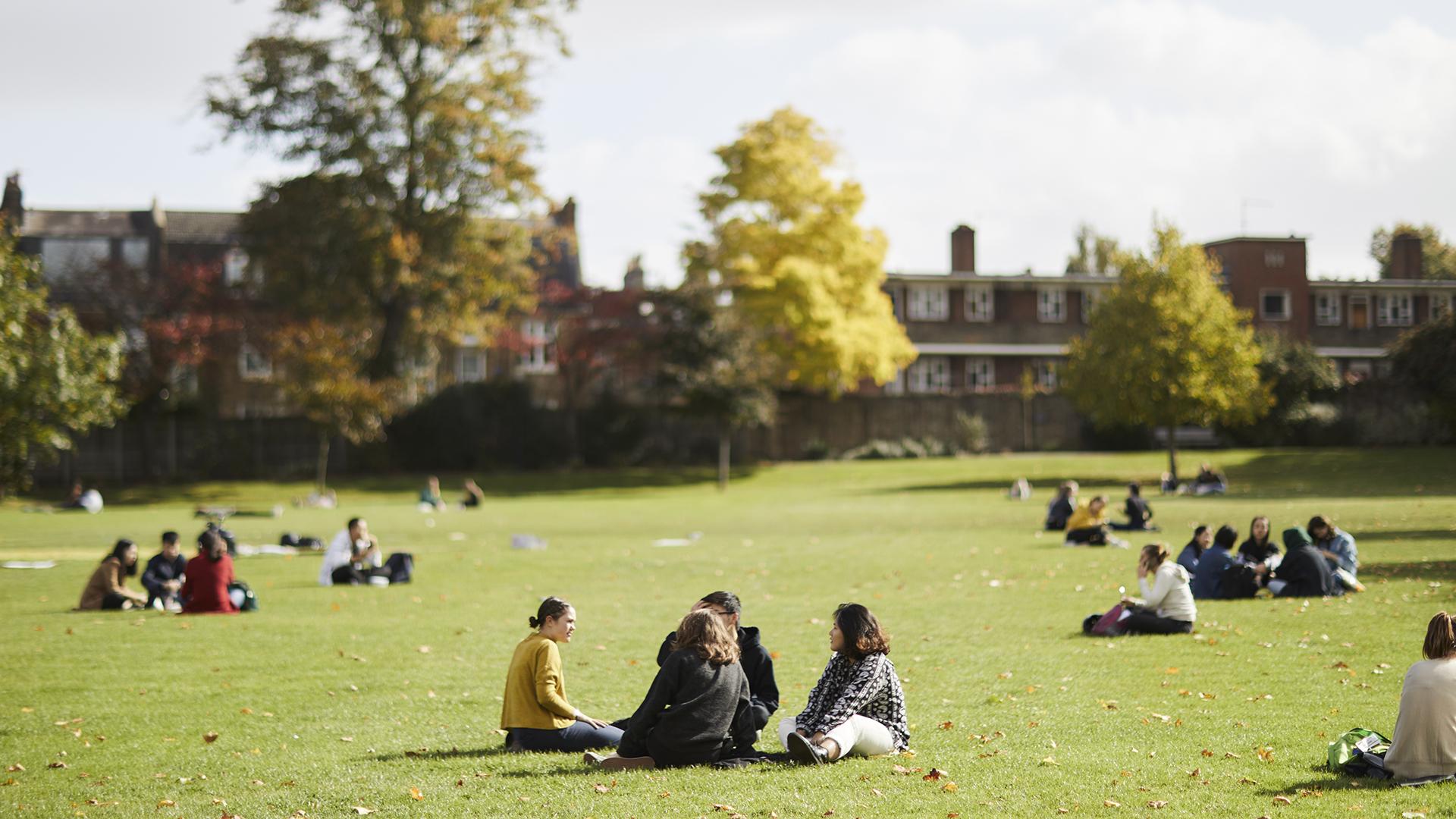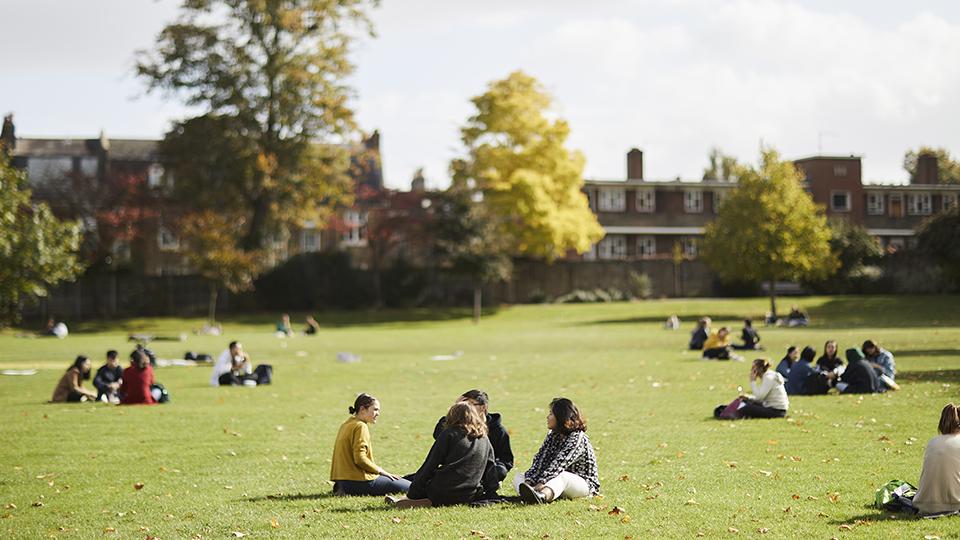Online Campus Tour
At Open Days, our students lead tours of the campus. If you are unable to make it to Goldsmiths in person, why not take the tour online instead?
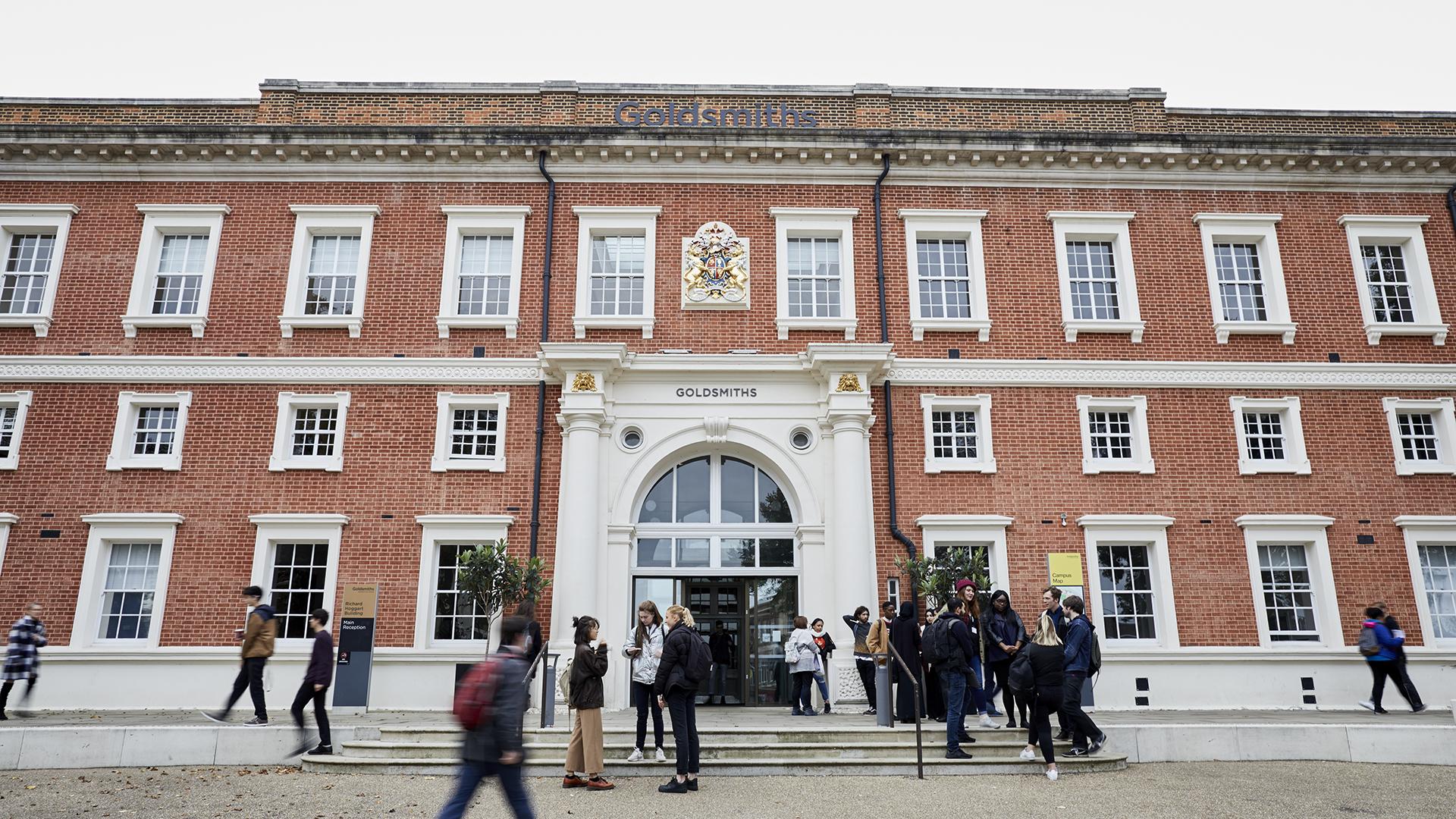
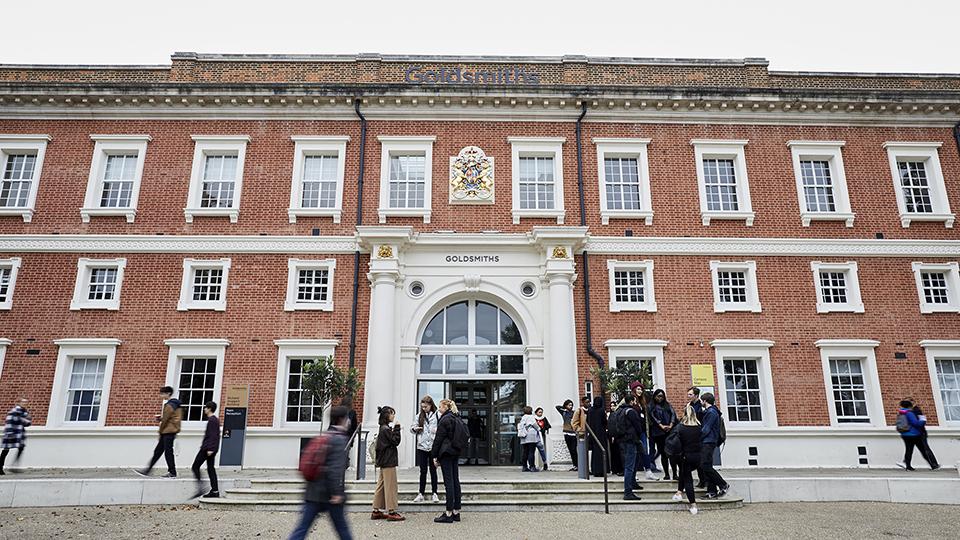
Start your journey outside the Richard Hoggart Building
Stop 1: Richard Hoggart Building (RHB)
Often considered as the main entrance to Goldsmiths, the Richard Hoggart Building can be found at the front of the campus. Here you will find our reception and The Great Hall, one of our key events spaces. The RHB, as it is known by Goldsmiths staff and students alike, is also home to the Departments of: Theatre and Performance; History; Visual Cultures and Music, which has its own purpose-built rehearsal rooms.
Did you know: Goldsmiths has been part of the University of London since 1904. Benefits for our students include access to Senate House Library.
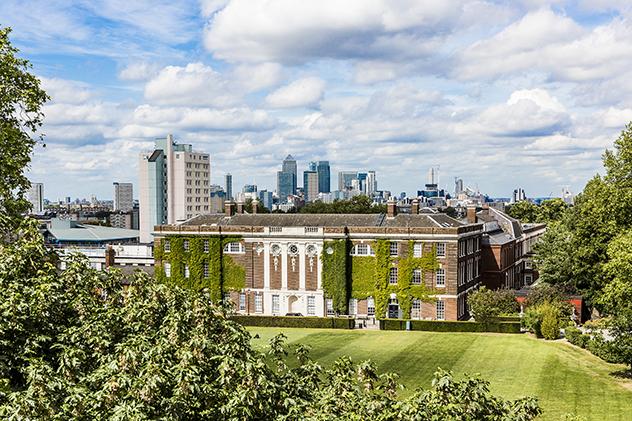
The back of the Richard Hoggart Building overlooks the College Green
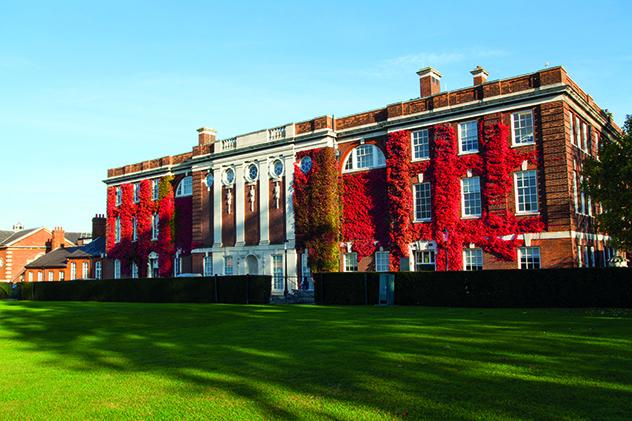
The Richard Hoggart Building always reflects the changes in season
Inside the RHB: dining and entertainment
If you are feeling hungry while on campus, food and refreshments are never far away. Along the right-hand corridor in the Richard Hoggart Building sits one of the many coffee shops on campus: Thirty Five café that offers a range of hot and cold food and Costa coffee.
For a more substantial meal, The Refectory can be found in the middle of the RHB. This food-court-style dining experience offers vegetarian, vegan and halal options. You can choose to dine inside the buzzing space or outside in the peaceful courtyard.
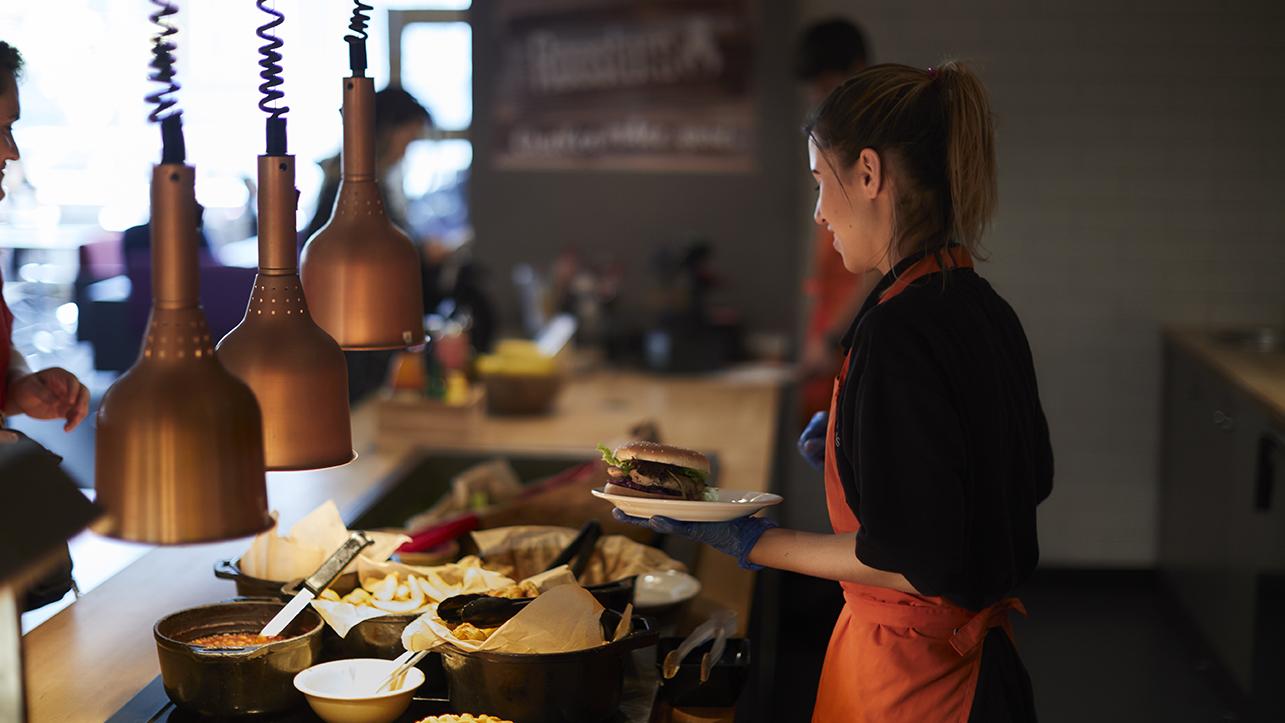
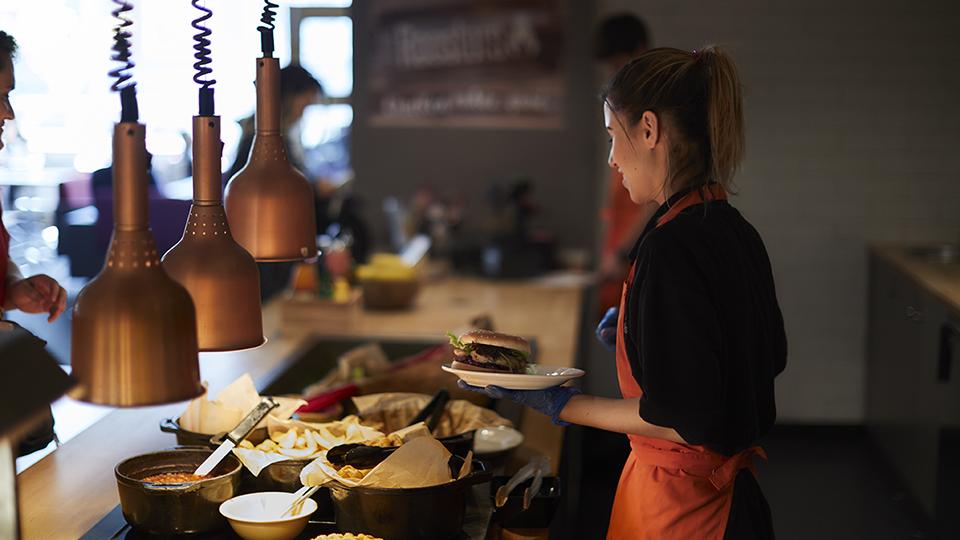
There are lots of places to dine on campus, the Refectory has a great selection
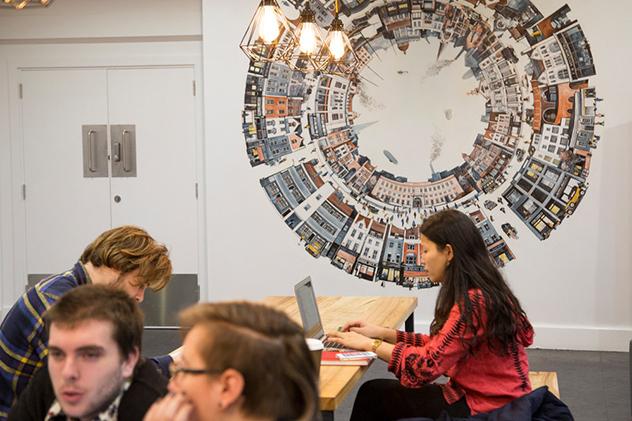
Thirty Five has a mural by local artist Joshua Drewe on the far wall that celebrates Goldsmiths’ history and that of the surrounding area
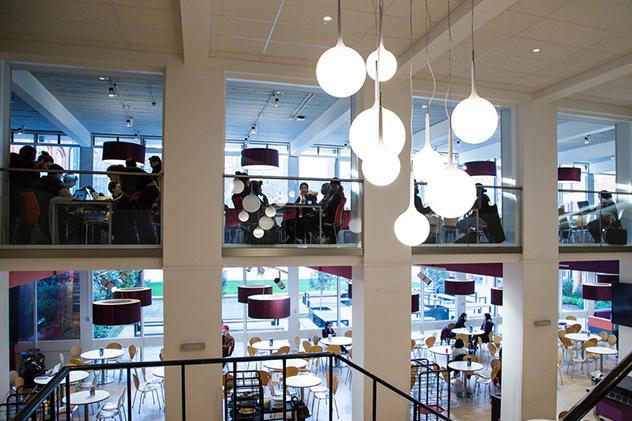
The Refectory has two floors, including cosy booths perfect for study groups
Stop 2: College Green
For many, the College Green is the heart of the campus, and on a sunny day it’s the perfect place to relax with friends or catch up on your reading. Some sports societies also use this as a place to train and practise.
During Welcome Week, the Green is filled with Society Fairs, freebies, music and fun activities for you to get involved with.
At the back of College Green, there are tennis courts available to use.
Did you know: In the corner of the College Green you’ll find a historic post that marked the boundary between the old Kent and Surrey borders. From this point you can see London’s famous ‘Gherkin’ and ‘Shard’ buildings in the distance.
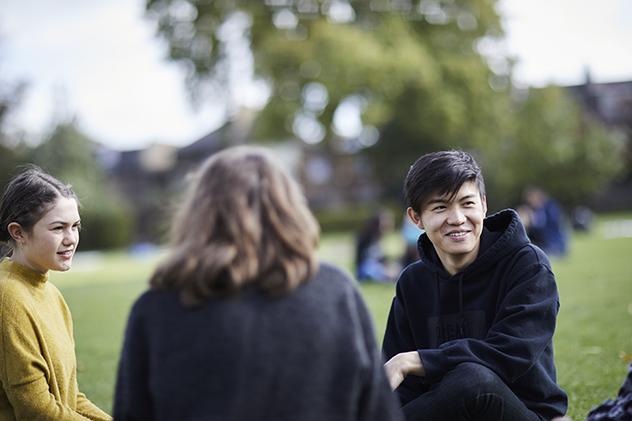
The College Green is the perfect place to socialise with friends
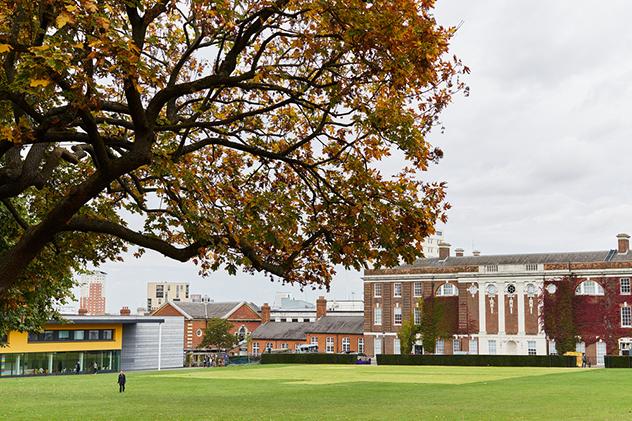
Many of the buildings on campus overlook the College Green
Stop 3: Professor Stuart Hall Building (PSH)
At the back of College Green, you’ll find the Professor Stuart Hall Building. This is home to the Department of Media, Communications and Cultural Studies (MCCS), the Institute for Creative and Cultural Entrepreneurship (ICCE), and the Institute of Management Studies (IMS).
In all of our media practice areas, we have purpose-built facilities that emulate current industry practice, including radio and TV studios, post-production facilities, video and sound editing suites, digital animation facilities, photography studios, and a 120-seat screening room.
The building is also filled with quiet study spaces and sofas for group work. While you are studying you can grab a coffee at our vegan Peak Street Café. On the top floor is a balcony, from which you get views of the London skyline.
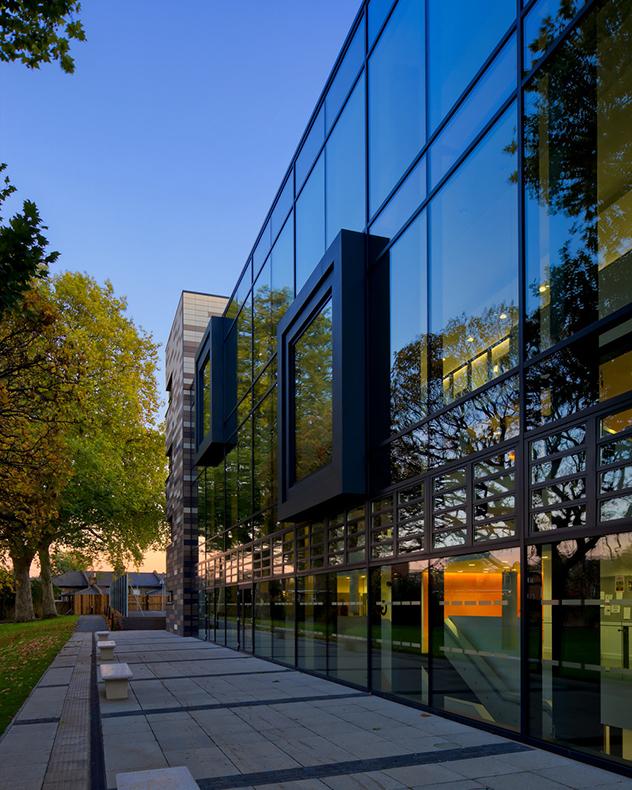
The Professor Stuart Hall Building can be found at the back of the College Green, its large windows provide great views
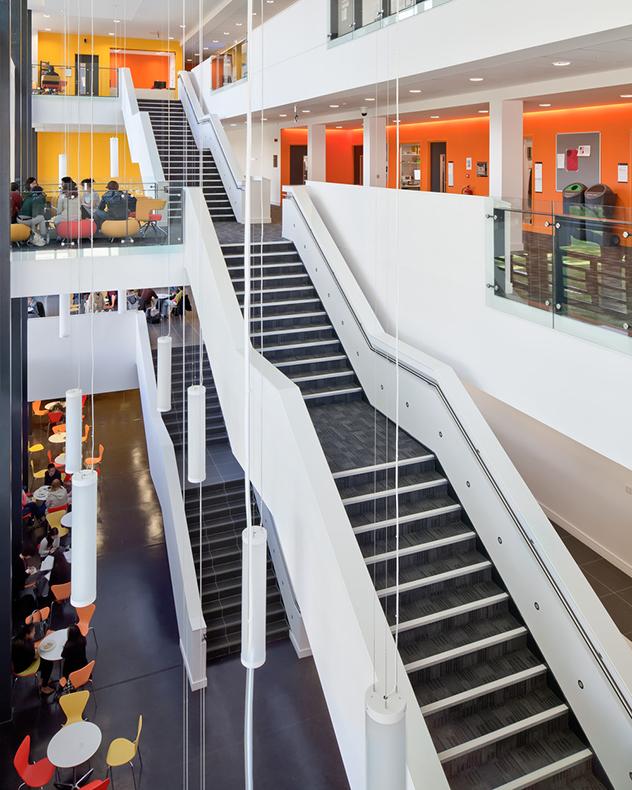
The four-storey atrium in the Professor Stuart Hall Building includes study spaces and a café
Stop 4: Lockwood Building
Next to the Professor Stuart Hall Building, you’ll find the Lockwood Building, which is home to the Department of Design. All Design students have their own dedicated studio space within the department and there are electronics for prototyping circuits as well as workshop facilities, a computing suite, and a textile studio.
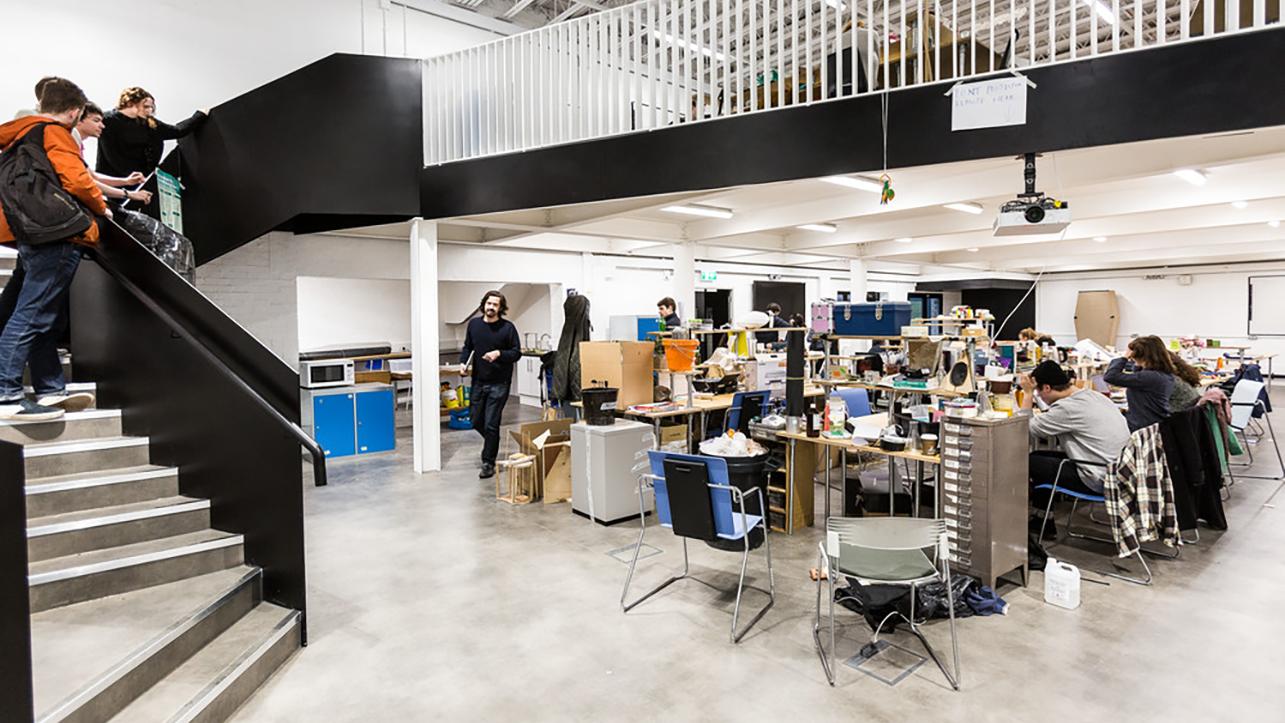
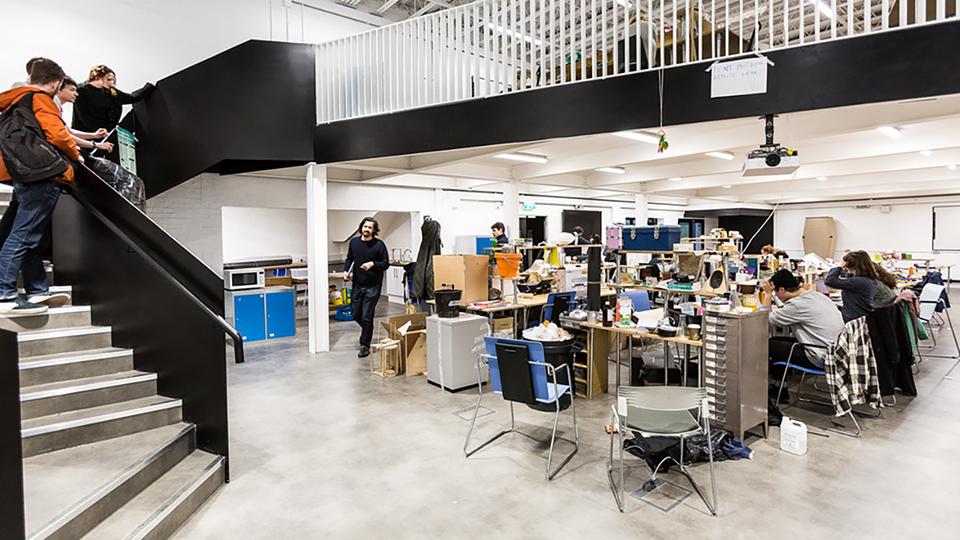
Inside the Lockwood Building there is a mezzanine level for third-year BA Design students
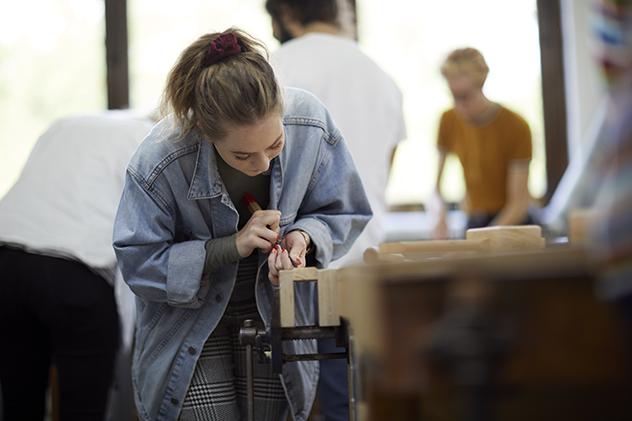
Design students have access to a range of facilities including a wood and general fabrication lab
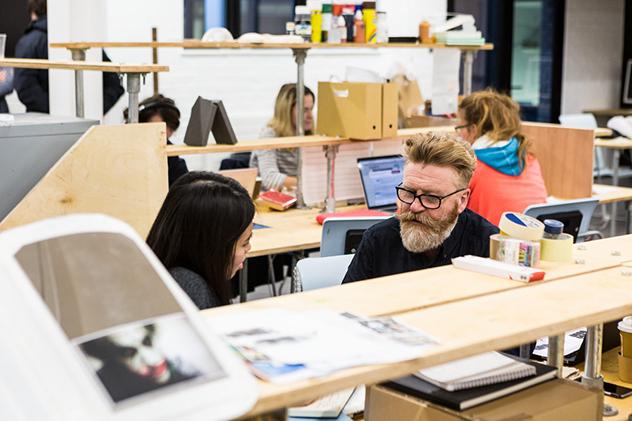
If you study Design, you'll be supported by a team of highly skilled makers and practioners
Stop 5: Whitehead Building
To the right of College Green sits the Whitehead Building, which is home to the Department of Psychology, the Institute of Management Studies (IMS) and the Graduate School, as well as one of the largest lecture theatres on the campus – the Ian Gulland Lecture Theatre.
Did you know: The Whitehead Building was built in 1968 and had a multi-million-pound makeover in 2008.
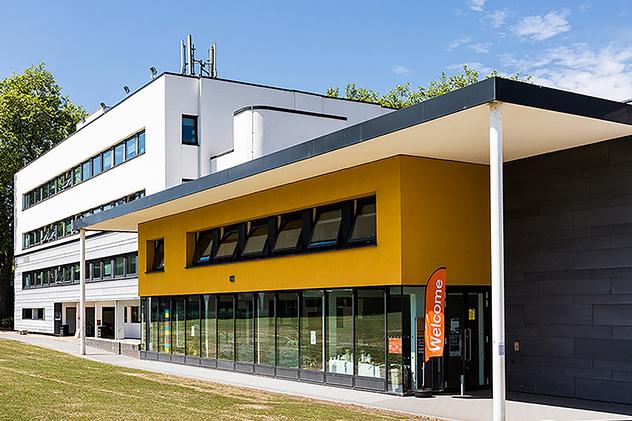
If you study Psychology you are likely to spend a lot of time in the Whitehead Building
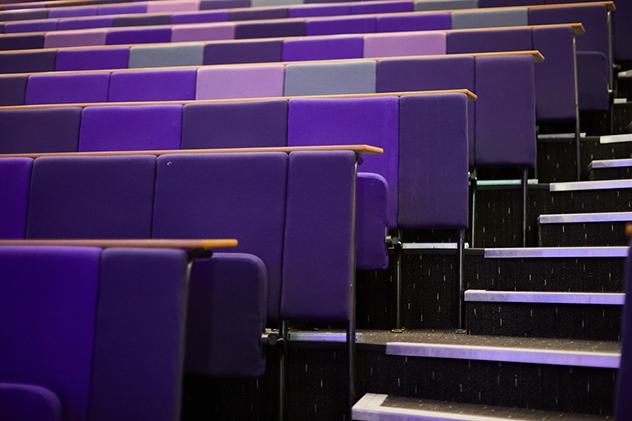
The Ian Gulland Lecture Theatre is the largest on campus and is used for teaching and events
Stop 6: St James Hatcham Building
This former church now contains a creative computing lab. It is also used for degree shows and as a performance space. The Department of Computing and the Department of Social, Therapeutic and Community Studies also occupy some of the houses along St James, which contains the Research Office – a resource that nurtures and promotes research activity at Goldsmiths.
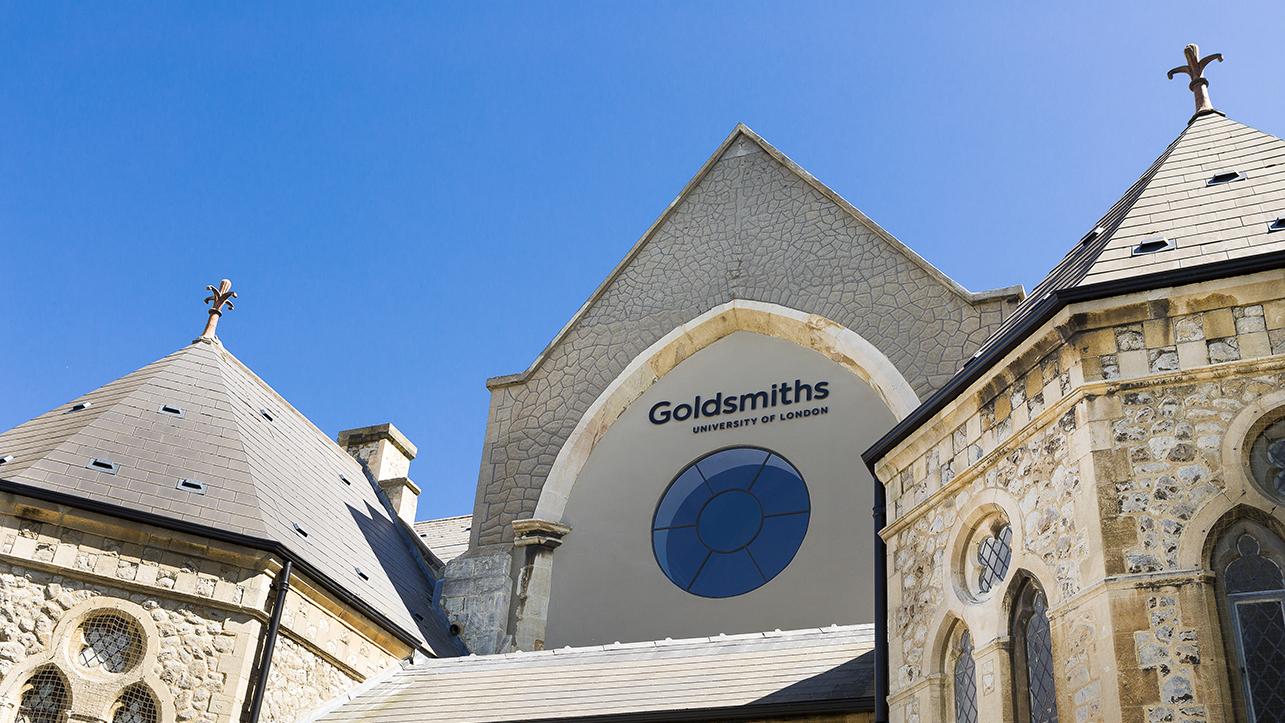
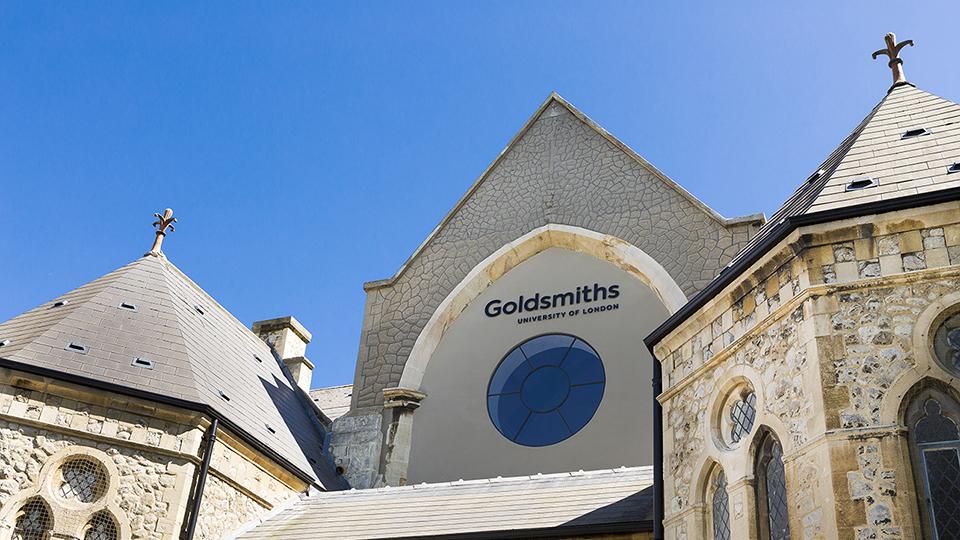
The building still retains a lot of original features including stunning stained glass, arch decorations and traditional stonework
Stop 7: Laurie Grove
Nearly all of the terraced houses along Laurie Grove are a part of Goldsmiths. The houses contain administrative offices for various departments, extending the fantastic community feel at Goldsmiths with all teams close by.
This street is also home to Laurie Grove Baths, which is a unique space that is used for Art studios and degree shows. It was built in 1898 and is Grade II listed so many of the Baths original features remain to this day.
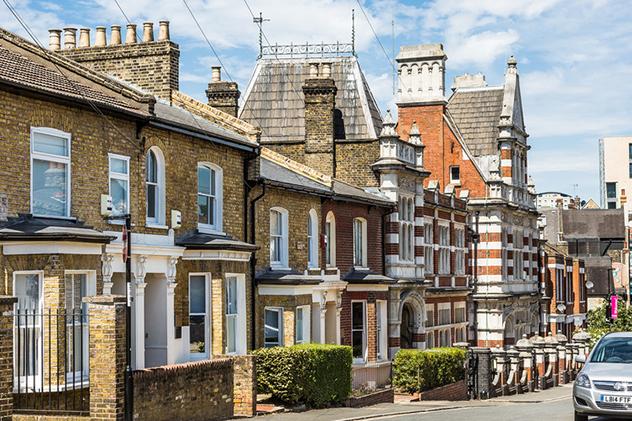
The historic Laurie Grove Baths once held dances and wrestling matches
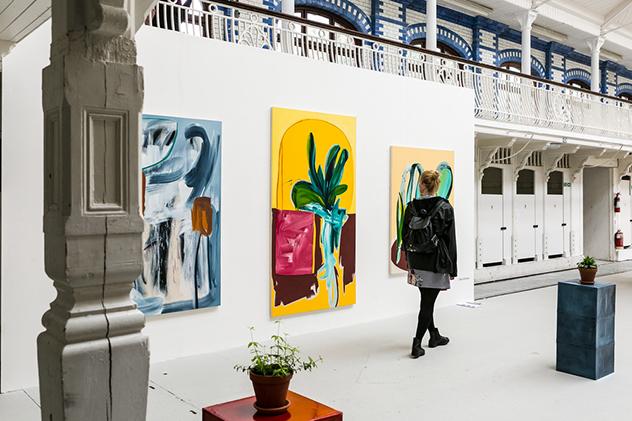
Today the original changing rooms are witness to Art degree shows
Stop 8: Students' Union (SU)
The Students’ Union contains a gallery and performance area as well as a bar, café and nightclub. The Union has a regular entertainment programme, from comedy and karaoke to live music and club nights.
The SU is run by an elected group of four students who are paid for the year they are in post. The union hosts over 100 clubs and societies giving you plenty of opportunities to socialise while at university. There is also a student-run newspaper, magazine and radio station you can get involved in.
Did you know: Popular Britpop band Blur held their first-ever gig at our SU.
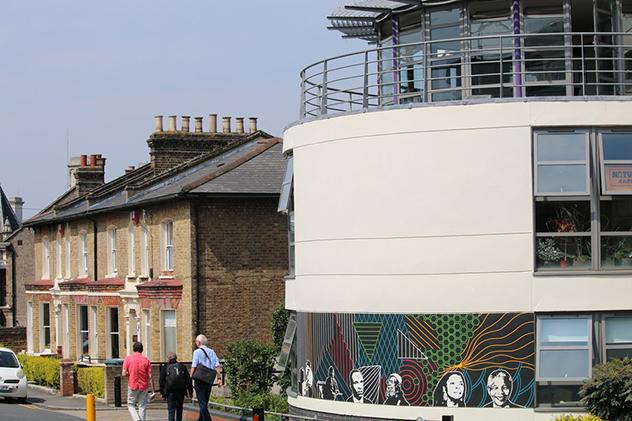
The SU building features a mural by Design graduate, Ted Low
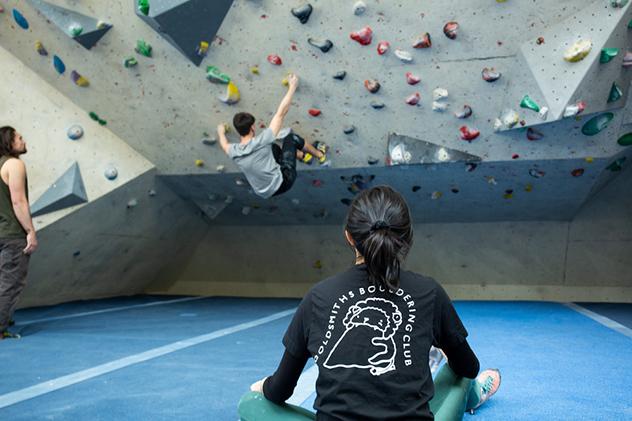
The SU's range of societies includes a variety of activities including bouldering!
Stop 9: Margaret McMillan Building
The Margaret McMillan Building is home to the Department of Educational Studies. The building was renamed the Margaret McMillan Building following a campaign by students and staff to ensure that the historic contributions of women are more widely recognised at Goldsmiths.
Did you know: Margaret McMillan was a social reformer, who founded the first open-air nursery school in Deptford in 1914 and set up health clinics to treat poor children.
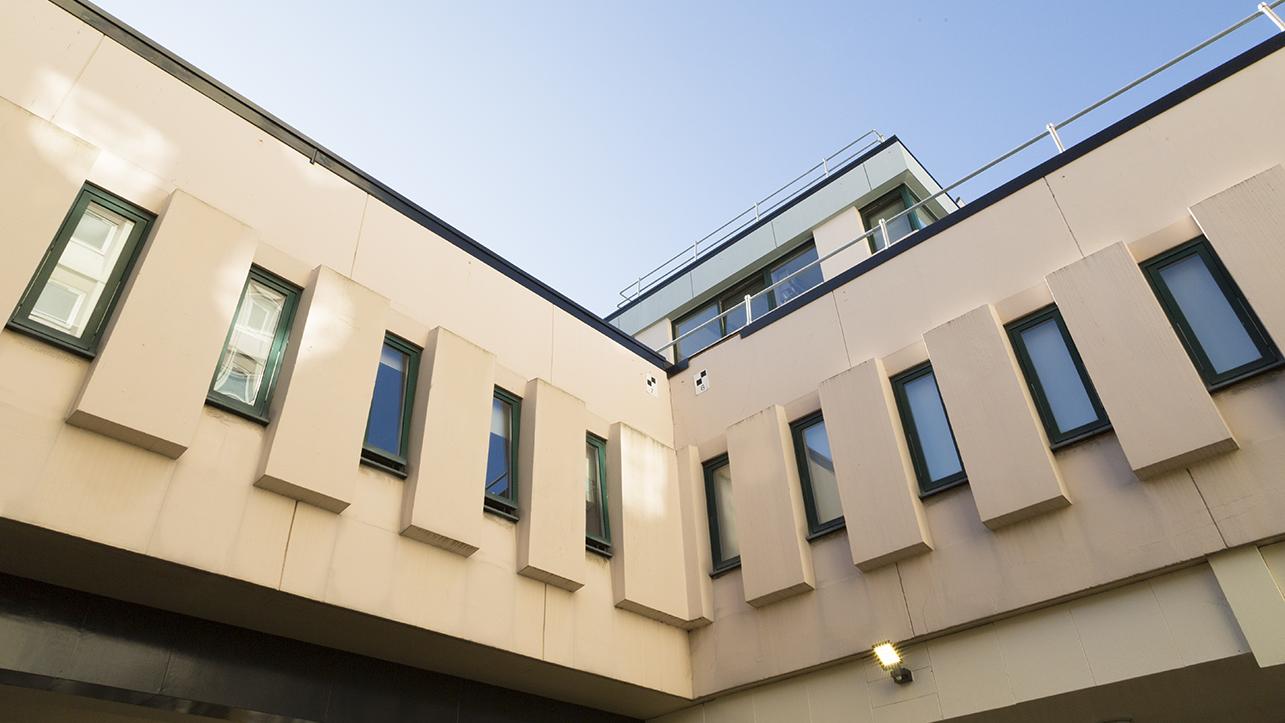
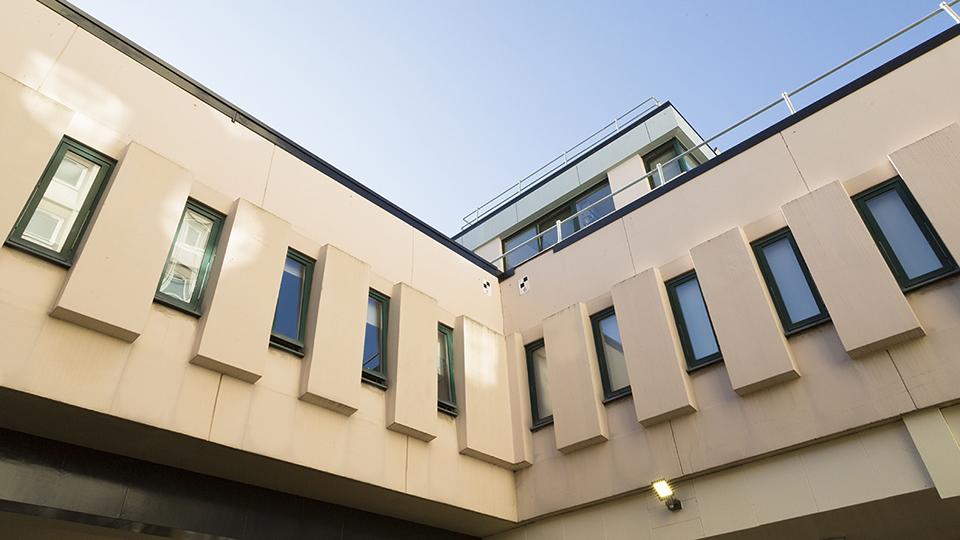
The Margaret McMillan Building is home to the Department of Educational Studies at Goldsmiths
Stop 10: Warmington Tower
Warmington Tower is home to the Departments of English and Creative Writing, Politics and International Relations, and Sociology. It also holds office space for some of our support departments.
Did you know: Warmington Tower was built in 1969 as purpose-built halls of residence. It was the first mixed halls at Goldsmiths.
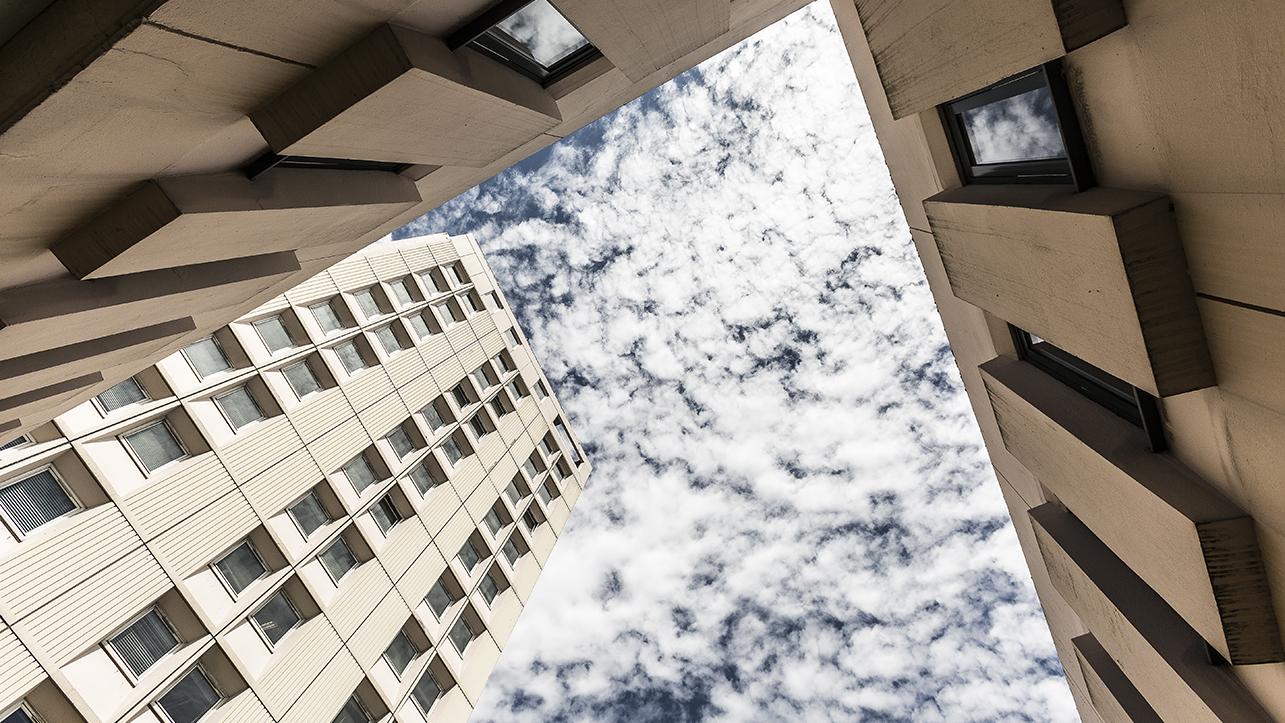
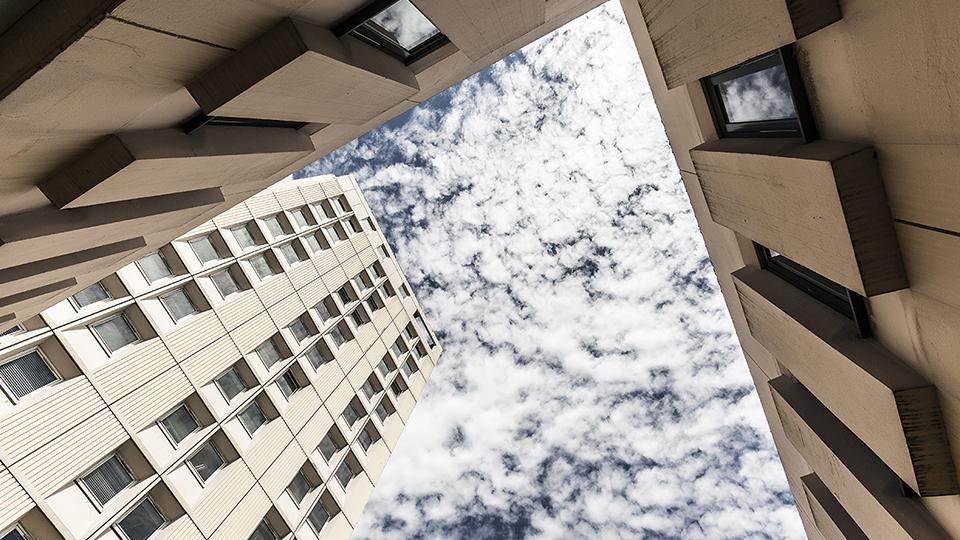
Warmington tower is home to several of our departments
Stop 11: Rutherford Building
The Rutherford Building holds the Library, open access computers (Macs and PCs), study spaces, Assistive Technology Centre, Digital Media Suite, Media Equipment Centre, one of the laptop lockers on campus and IT helpdesk.
This is also home to the Academic Skills Centre, which offers opportunities to learn and develop a wide range of academic skills. Sessions are run by academic lecturers, study skills tutors and subject librarians.
This building is open 24 hours a day nearly every day of the year and has a little café – it is a hub of Goldsmiths life.
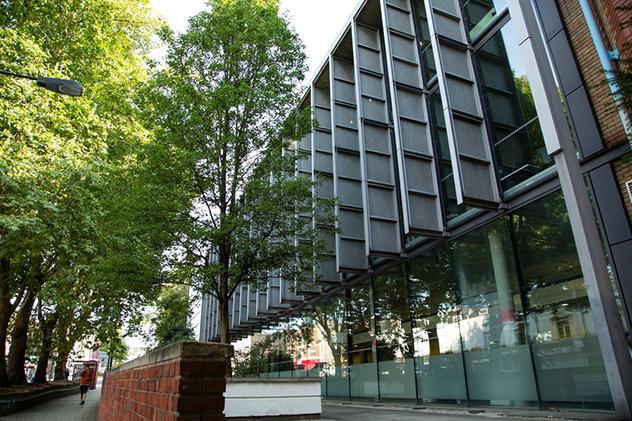
You'll find the Library inside the Rutherford Building
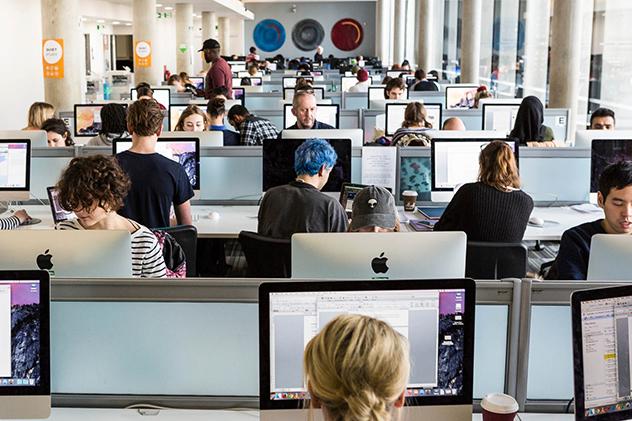
You can find the IT suite upstairs in the Rutherford Building, there is a choice of iMacs or PCs
Stop 12: Deptford Town Hall Building
If you walk down the main road in New Cross past the local independent shops you will reach Deptford Town Hall. This is home to the Department of Law, administrative offices and the old Council Chamber, which is regularly used as a performance venue for music recitals.
Deptford Town Hall is one of three Grade-II listed buildings on campus and some of the building's iconography - including statues representing naval figures associated with slavery and empire - is contentious today and raises difficult questions about how to deal with historic celebrations of those who wielded imperial power, subjugating other nations and enslaving their people. You can find out more about the history and context of these statues – and about a community consultation to help decide their future.
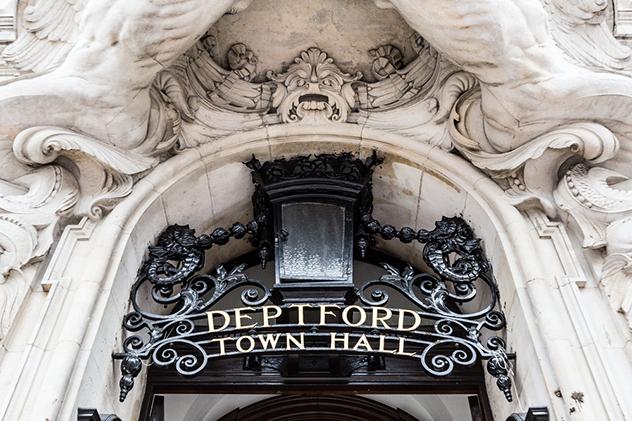
The Baroque-style building was acquired by Goldsmiths in the late 1990s
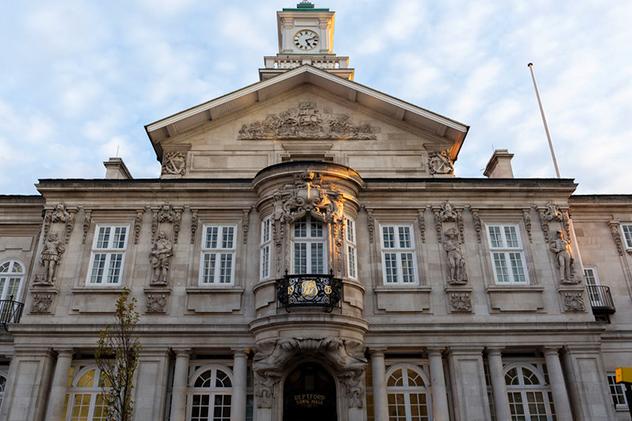
This building was originally the town hall for the Metropolitan Borough of Deptford
Stop 13: Loring Hall
Your next stop is just a short walk from Deptford Town Hall, Loring Hall is one of our halls of residence and is the closest one to campus. We offer a range of accommodation options all within a short walk or commute of the campus. Our halls all vary in character, and the areas they are in each offer something different to students.
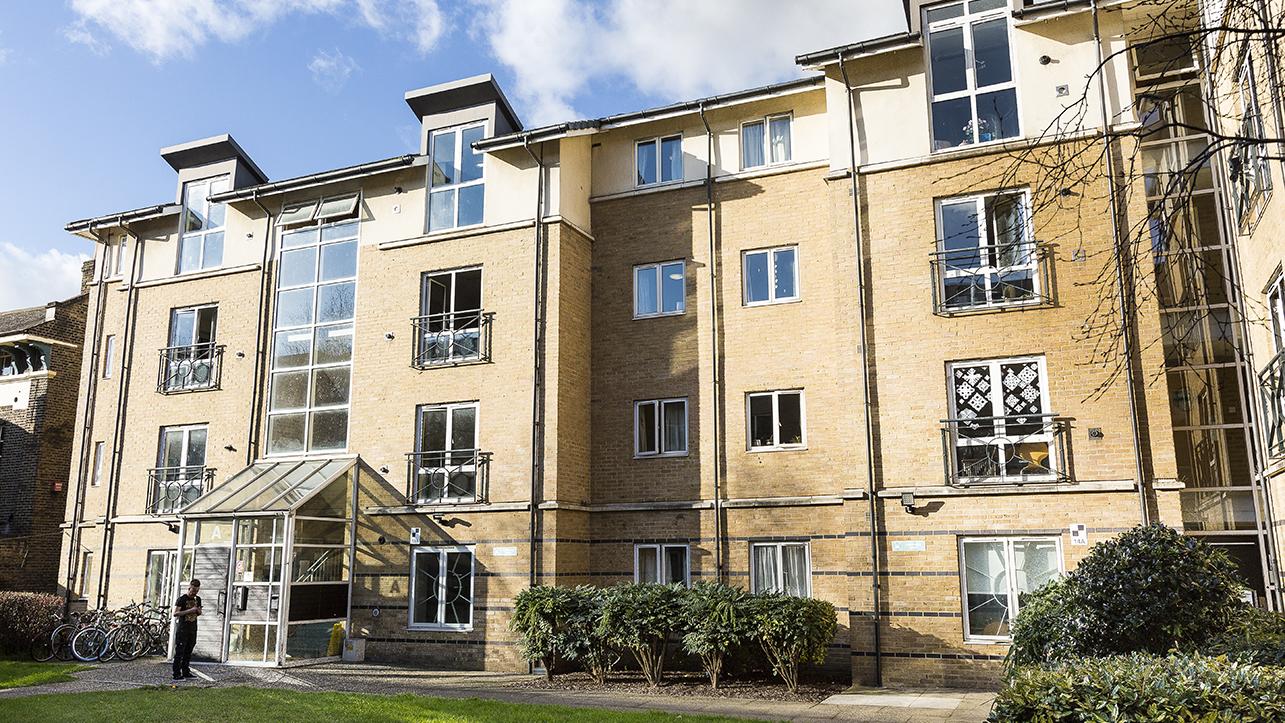
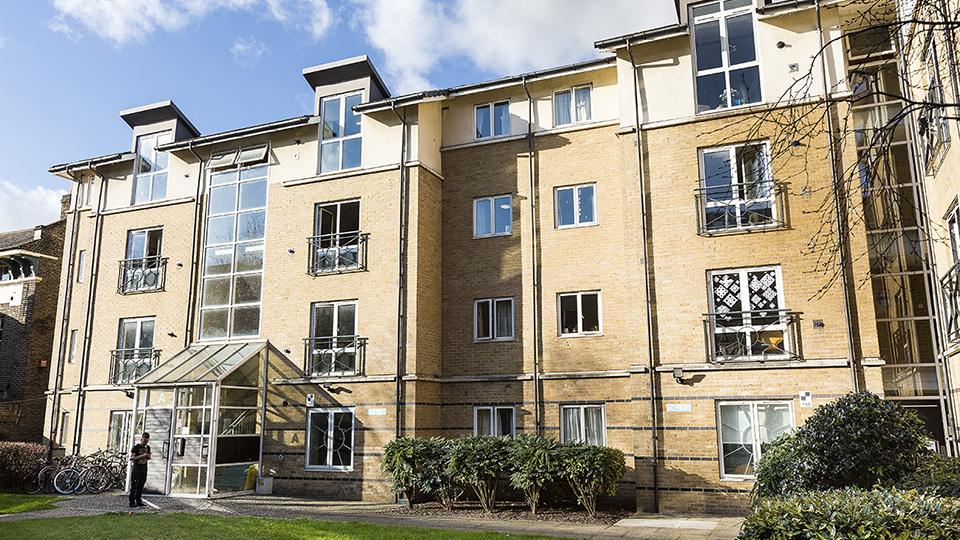
The nearest train station to Loring Hall is New Cross Gate
Stop 14: Ben Pimlott Building
Our penultimate location is the Ben Pimlott Building, which features teaching and studio space for students in the Department of Art, as well as facilities and research space for the Departments of Computing, Design and Psychology. During the summer the doors open for our degree shows, where you can explore the work of final-year students, and wander around the inspiring exhibition spaces.
The Ben Pimlott Building is one of the most recognisable locations on campus as it features a large sculptural 'scribble' on the outside, which you can spot easily when walking around New Cross.
Did you know: the 'scribble' sculpture is nine metres high and made up of 229 pieces of steel. It would be 533 metres long if outstretched – higher than The Shard, the Eiffel Tower and the Empire State Building.
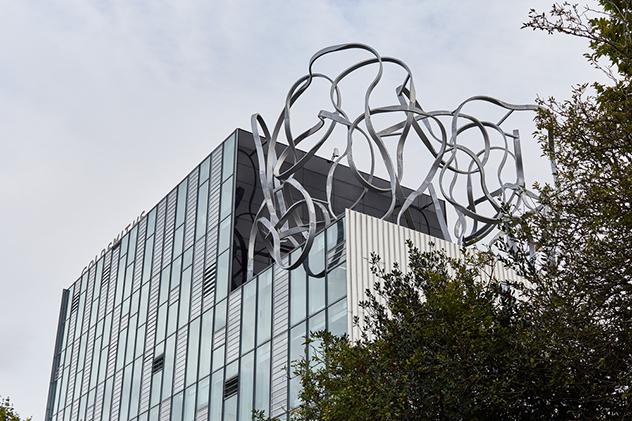
The spaghetti-like scribble (sometimes called the squiggle) was designed by award-winning architect Will Alsop
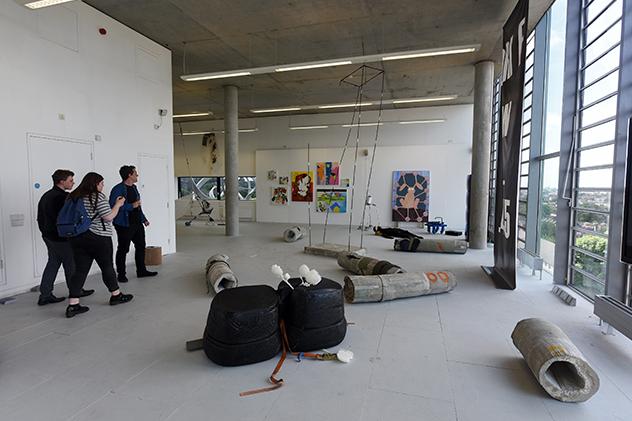
The Ben Pimlott Building is transformed into an exhibition space for our degree shows
Stop 15: Goldsmiths Centre for Contemporary Art
Last but not least is the Goldsmiths Centre for Contemporary Art (CCA). Opened in September 2018, the CCA was designed by Turner Prize-winning collective Assemble, and hosts world-class exhibitions by international artists. Formerly a Victorian bathhouse, the CCA aims to engage with students and draw upon the research excellence of the university. The gallery is open to everyone and all exhibitions are free.
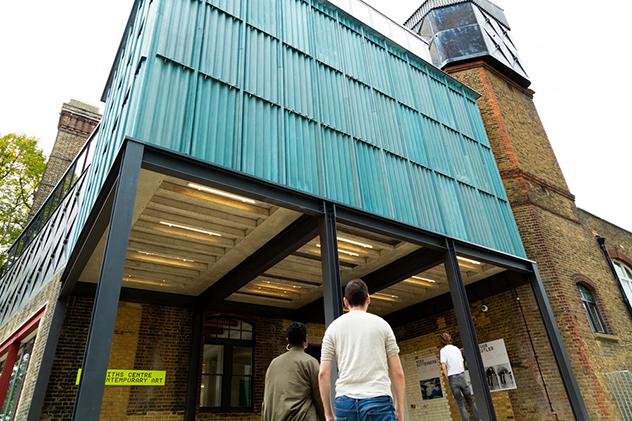
The CCA also hosts regular talks, performances, screenings and other events related to the exhibition programme
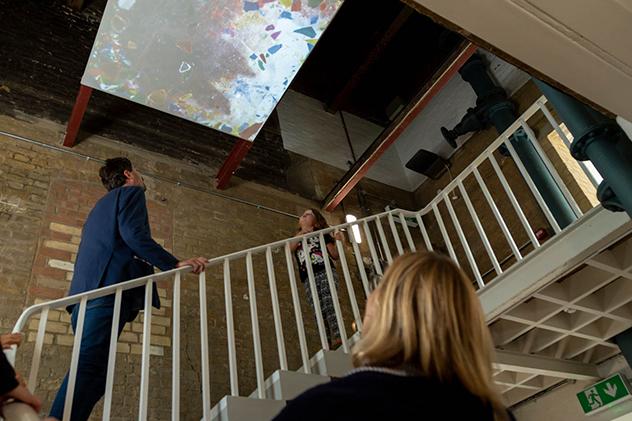
Students in the Department of Art get to make use of the gallery as an academic space
Thank you for taking our Online Campus Tour, we hope it has given you a bit of insight into what Goldsmiths' campus is like. if you would like to take a look at more of our facilities in greater detail you can visit the Goldsmiths Virtual Tour for 360 views of key spaces on campus.
